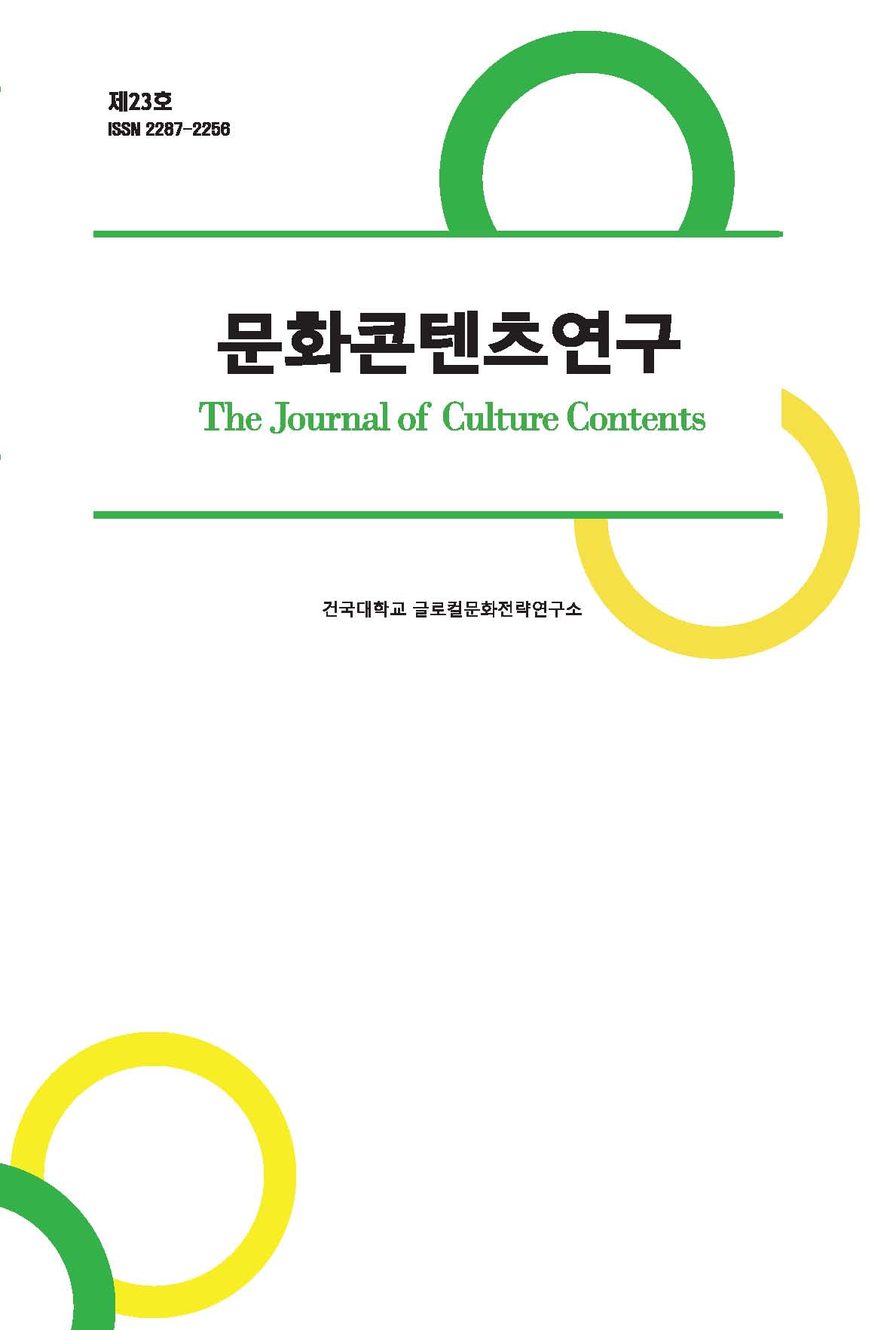Research Article
Abstract
References
Information
The methods that increased the popularity of web novels as a form of intellectual property (IP) that began in 2015 have become major strategies for securing both popular and high-quality content in the broadcasting industry. While global over-the-top (OTT) services are gaining influence by producing and exclusively distributing original content, the public’s demand for content is becoming ever more diversified. Web novel IPs can serve as a rich source of secondary content to meet this demand. This study analyzed how content franchises, media fragmentation, and the long-tail strategy can be used to increase the amount of web novel IP and how web novel IPs have grown in South Korea, and organized the trends and characteristics. This study suggests that the variability and flexibility of content IP in the production and consumption of secondary creations should be examined from various angles by analyzing how web novel IP is used in other countries. This study also proposes a strategy to consider the fragmentation and connectivity between content, media, and users.
2015년 이후 본격화되기 시작한 웹소설 IP 확장은 현재, 방송 산업에서 대중성과 작품성 모두를 공략할 수 있는 주요한 전략 중 하나로 자리매김했다. 글로벌 OTT 서비스가 원천콘텐츠 제작과 배타적 유통을 통해 독자적인 영향력을 확대해나가고 있는 가운데, 콘텐츠에 대한 대중의 요구가 다각화되고 있다는 점에서 웹소설 IP를 다양한 2차 콘텐츠로서 활용하는 방안을 강구하는 것은 시급한 과제인 것으로 보인다. 이 글은 웹소설 IP의 확장가능성을 논의하는데 있어 유용하다고 판단되는 ‘콘텐츠 프랜차이즈’와 ‘미디어 세분화’ 및 ‘롱테일 전략’을 검토하고, 국내의 웹소설 IP 활용 사례를 분석해 전반적인 경향과 특성을 정리하고자 한다. 또한 해외 웹소설 IP 활용 사례 분석을 통해 2차 창작물의 제작과 소비에 있어 콘텐츠IP의 가변성과 유연성을 다각도로 실험하고 콘텐츠 간, 미디어 간, 이용자 간의 연결성과 세분화를 함께 고려하는 전략이 필요하다는 것을 제언하고자 한다.
- 김명석, 『인터넷 소설, 새로운 이야기의 탄생』, 책세상, 2009년.
- 김숙·장민지, 「스몰 콘텐츠 웹소설의 빅플랫폼 전략」, 『코카포커스』 제16권(제8호), 한국콘텐츠진흥원, 2016년.
- 김택규, 「IP 중국 엔터산업 전반에 핵심가치로 자리 잡아」, 『한중콘텐츠연구소』, 한중콘텐츠연구소, 2017년.
- 이성민·이윤경, 『콘텐츠 지식재산활용산업 활성화 방안 연구』, 한국문화관광연구원, 2016년.
- 서성은, 「중세 판타지 게임의 세계관 연구」, 『한국콘텐츠학회논문지』 제9권(제9호), 2009년.
- 손진원, 「웹툰과 드라마를 매개하는 ‘로맨스’」, 『지금, 만화』 제4권, 한국콘텐츠진흥원, 2019년.
- 윤석진, 「한국 텔레비전드라마 장르 유형에 관한 시론」, 『한국문학이론과 비평』 제19권(제2호), 2015년.
- 위근우, 「드라마가 된 웹툰, 안일한 소재주의와 K-드라마 문법의 한계를 넘어」, 『지금, 만화』 제4권, 한국콘텐츠진흥원, 2019년.
- 장민지·강보라, 『IP 비즈니스 기반의 웹소설 활성화 방안』, 한국콘텐츠진흥원, 2018년.
- 최미진, 「N세대와 인터넷 소설의 논리」, 『대중서사연구』 제9권(제2호), 2003년.
- 최배은, 「한국 웹소설의 서술형식 연구」, 『대중서사연구』 제23권(제1호), 2017년.
- 한혜원·김유나, 「한국 웹콘텐츠의 특성 및 유형 연구」, 『이화어문논집』 제35권, 2015년.
- Anderson, C., The long tail: Why the future of business is selling less of more, Hachette Books, 2006.
- Jenkins, H., Textual Poachers: Television Fans and Participatory Cultures, Routledge, 1992.
- Jenkins, H., Fans, Bloggers, and Gamers: Exploring Participatory Culture, NYU Press, 2006.
- Jenkins, H., Ford, S. & Green, J., Spreadable Media: Creating Value and Meaning in a Networked Culture, NYU Press, 2013.
- Napoli, P. M., (Audience evolution: New technologies and the transformation of media audiences), 백영민 외 역, 『수용자 진화』, 나남, 2013.
- 「네이버 웹툰 원작인 ‘오디오 시네마’ 공개」, 『지디넷코리아』, 2020년 6월 11일자.
- 「비주얼 맛집, 음악 맛집 ‘애프터: 그 후’」, 『스타투데이』, 2020년 10월 17일자.
- 「“포켓몬 열풍 여전하네”...작년 매출 329억 사상최대」, 『머니투데이』, 2018년 4월 6일자.
- 「‘김비서가 왜 그럴까’ 정경윤 작가 “로맨스 소설, 콘텐츠 확장에 최적”」, 『동아일보』, 2019년 10월 7일자.
- 한경 경제용어사전, 프랜차이즈, https://terms.naver.com/entry.nhn?docId =2062853&cid=42107&categoryId=42107(검색일: 2020년 10월 15일).
- Publisher :Research Institute of Creative Contents
- Publisher(Ko) :글로컬문화전략연구소
- Journal Title :The Journal of Culture Contents
- Journal Title(Ko) :문화콘텐츠연구
- Volume : 20
- No :0
- Pages :129-152
- DOI :https://doi.org/10.34227/tjocc.2020..20.129



 The Journal of Culture Contents
The Journal of Culture Contents





